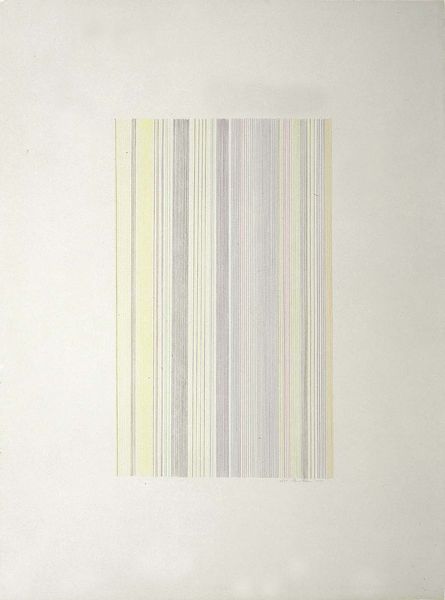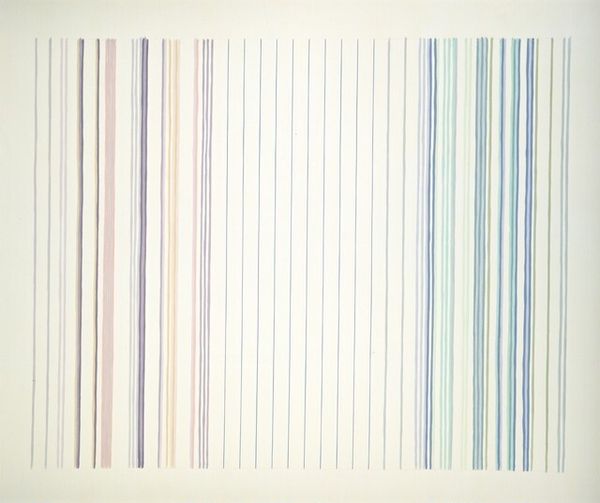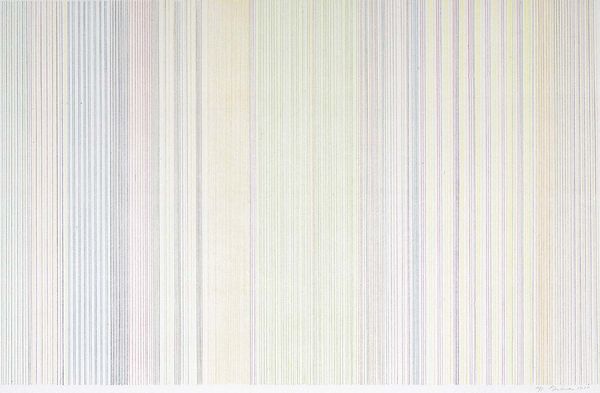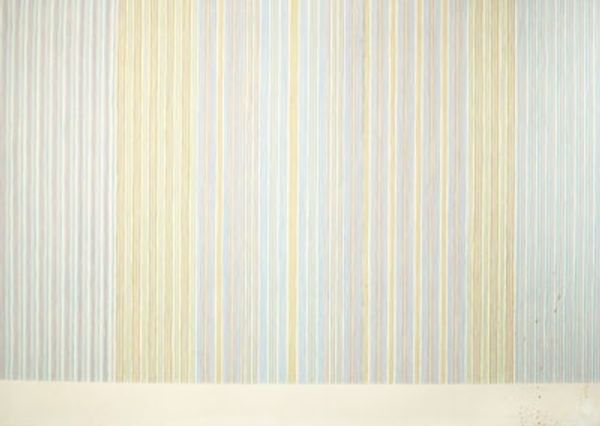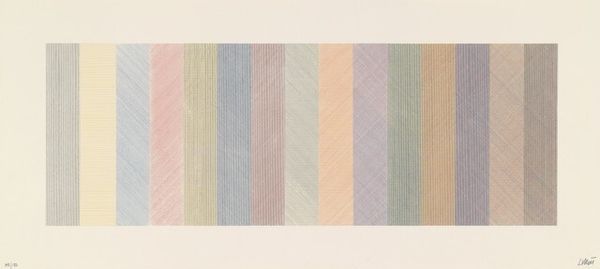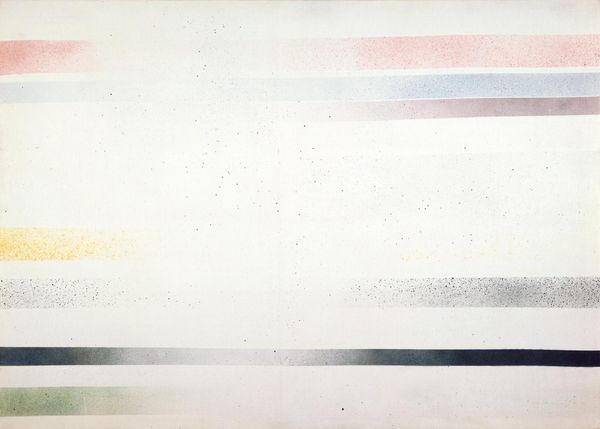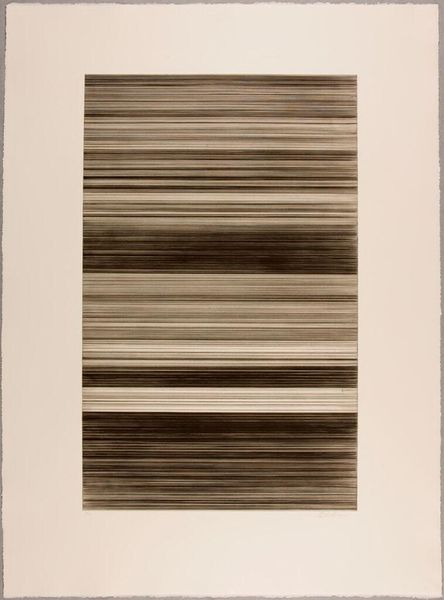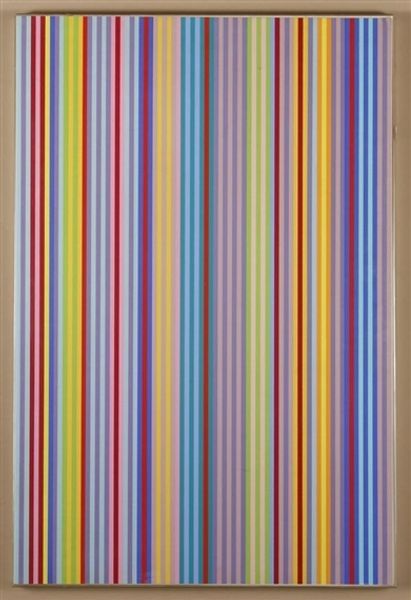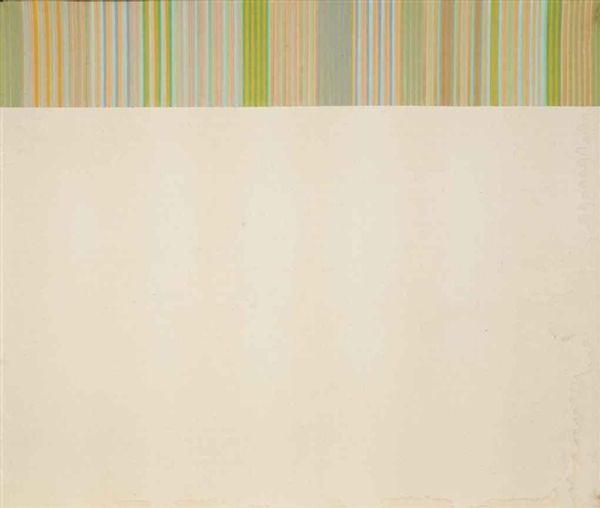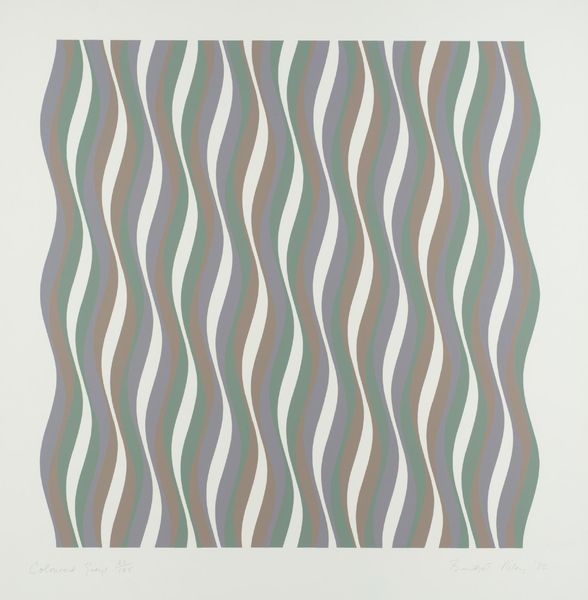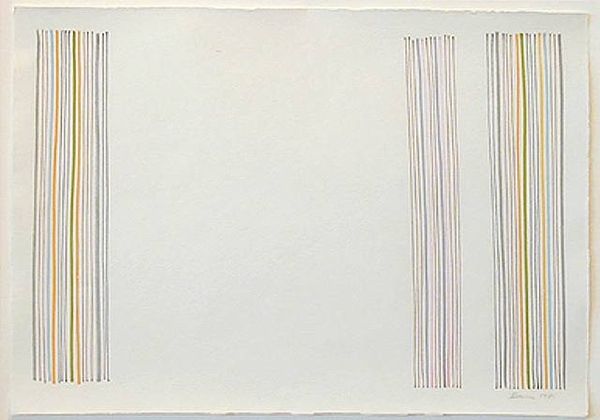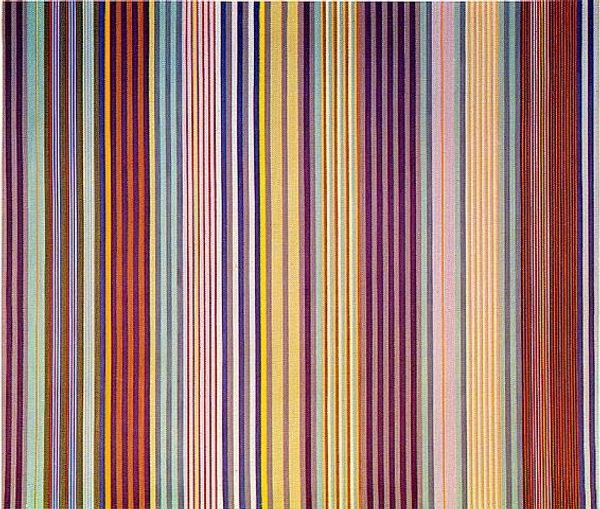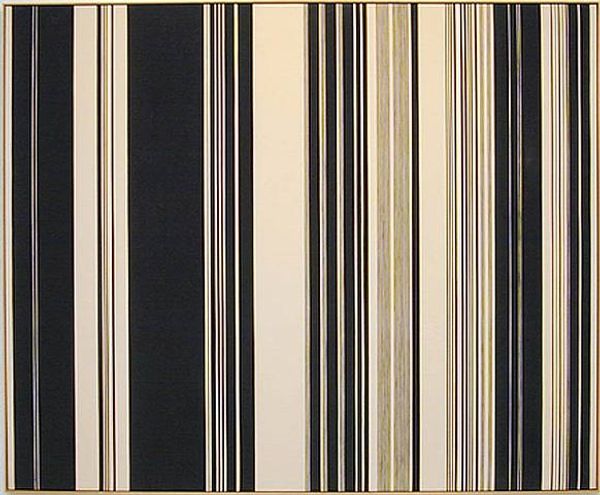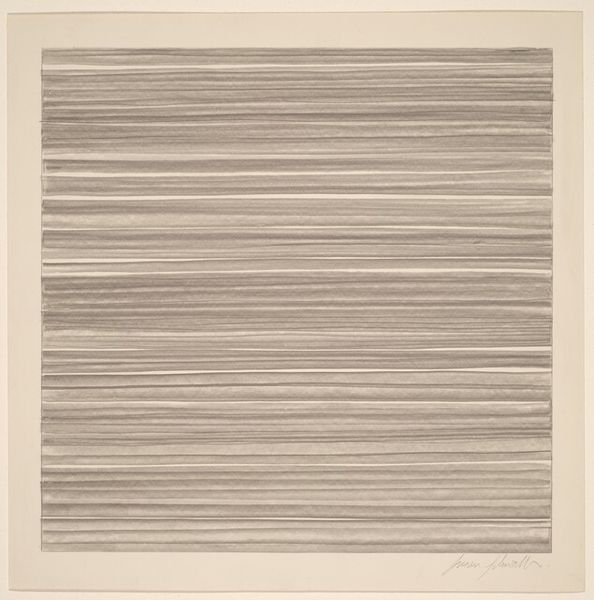
Copyright: Gene Davis,Fair Use
Editor: This is Gene Davis' "Cold Turkey" from 1973, created with acrylic paint. Looking at it, I’m struck by how subdued the colors are, almost like faded pastels. The vertical lines create a rhythmic feel, but there's also something repetitive about it. How do you interpret this work? Curator: Considering Davis' context, a hard-edge and color field painter, this piece challenges traditional artistic labor. It prompts us to contemplate the means of its production. What specific labor was involved in making such thin lines over and over? Did Davis delegate tasks, using assistants to apply these almost imperceptible marks? Editor: That’s interesting! I was just focused on the overall effect, not so much on the individual acts of painting. So you’re thinking about the physical labor involved in applying all these lines, and if there's a delegation of work. Curator: Exactly! Think about the materials too: acrylic paint was a relatively new industrial product at the time, replacing oils. Davis fully embraces its flatness and evenness of color. How does this standardization of material impact the work’s meaning in the social climate of production and consumption? Editor: I see what you mean! It's not just about the visual experience; it’s also about the materials and the labor, revealing the hidden narratives behind the creation. Thanks, that shifts my understanding completely! Curator: Indeed. Thinking about art as the result of processes tied to social and economic realities provides depth to our encounter with a work like this.
Comments
No comments
Be the first to comment and join the conversation on the ultimate creative platform.
